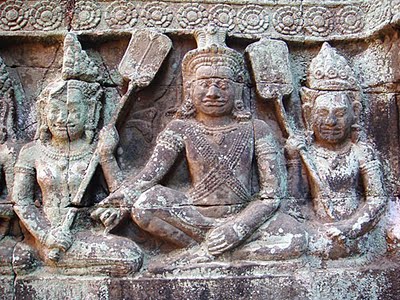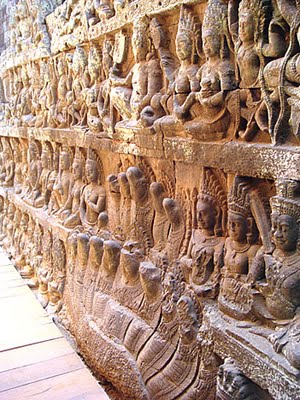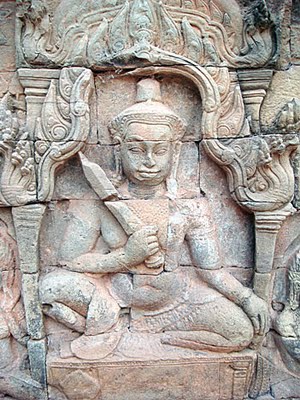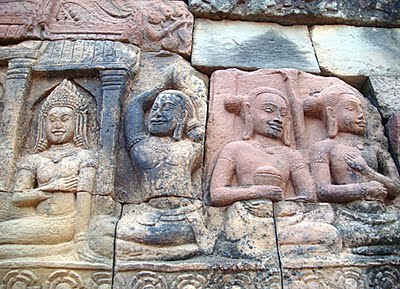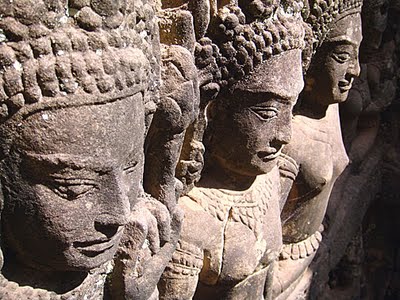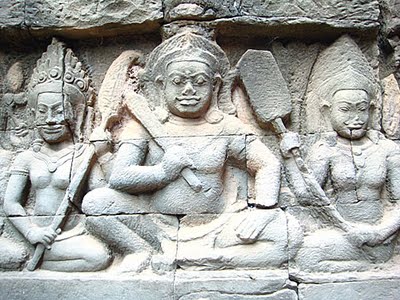 A King sits in the royal court, identified by his short broadsword, fanned by attentive concubines
A King sits in the royal court, identified by his short broadsword, fanned by attentive concubines
Most of you who've been to the Angkor temples near Siem Reap, will have visited the massive city of Angkor Thom and within its central area, the
Terrace of the Leper King. Not as immediately obvious as its nextdoor neighbour, the Elephant Terrace, the outside wall of the Leper King version hasn't fared too well over the years and many of the sections of carvings are badly weathered and simply not photogenic. But step inside the 'secret' passageway just a couple of metres behind the outside wall, and you enter a zig-zag world of kings and concubines, heavenly dancers and giant naga snakes, where many of the sculptures are in pristine condition, having been hidden from view for hundreds of years. The height of the terrace wall is about seven metres which allows multi-tiered friezes, full of finely-etched figures, that were meticulously restored by the EFEO team under Christophe Pottier between 1993 and 1996. Previous attempts to renovate the terrace had been made before, the last was in 1972 but the civil war put an end to that and it was up to Pottier and his team to complete the work. And what a great job they've done too. The terrace was originally constructed in the 13th century under the watchful eye of the great Khmer king, Jayavarman 7th. The reference to the Leper King, well that's another story entirely.
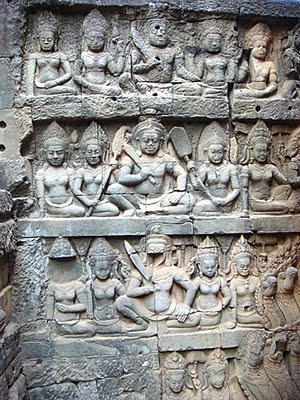 These three registers of friezes at the Leper King Terrace show the royal court with the King surrounded by adoring female company
These three registers of friezes at the Leper King Terrace show the royal court with the King surrounded by adoring female company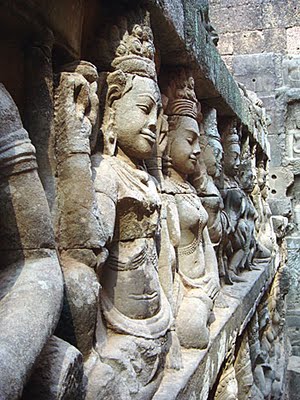 The secret passageway of the Leper King Terrace was hidden from view for centuries
The secret passageway of the Leper King Terrace was hidden from view for centuries
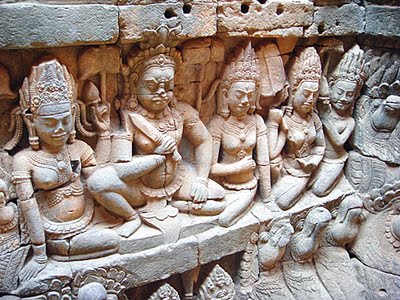 The King and his attendants sit above a massive naga snake
The King and his attendants sit above a massive naga snake
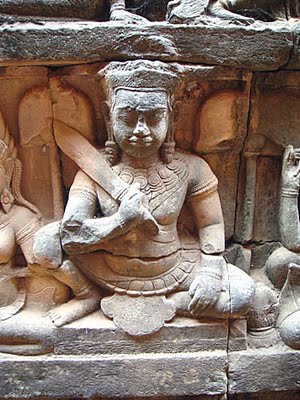 A royal figure and short sword, with parasols in the background
A royal figure and short sword, with parasols in the background
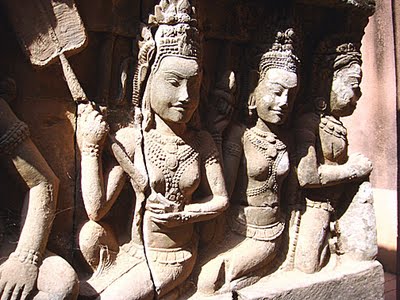 The attendants or concubines have also been called devata or apsaras - take your pick
The attendants or concubines have also been called devata or apsaras - take your pick
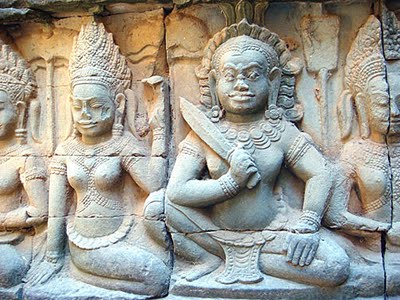 The King in all his regal glory is surrounded by well-dressed devata with elaborate headdresses
The King in all his regal glory is surrounded by well-dressed devata with elaborate headdresses
Labels: Angkor Thom, Terrace of the Leper King
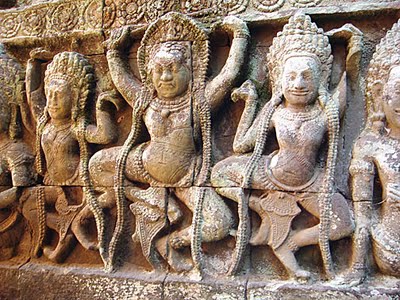 These dancing figures could be termed apsaras, though the one in the middle has a face that resembles someone chewing a wasp
These dancing figures could be termed apsaras, though the one in the middle has a face that resembles someone chewing a wasp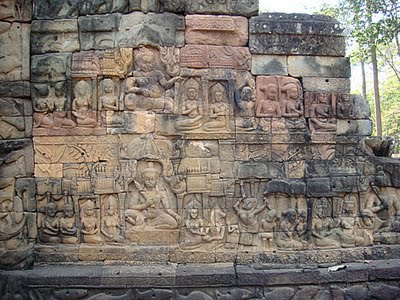 This part of the northern outer terrace is in good condition. Note the multi-coloured sections of the wall.
This part of the northern outer terrace is in good condition. Note the multi-coloured sections of the wall.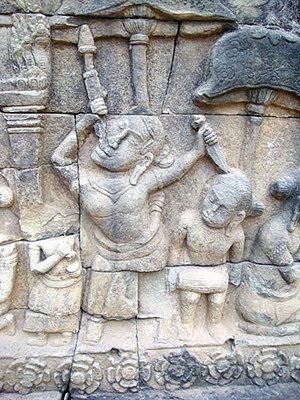 Don't try this at home. A sword swallower tries to impress the King whilst spearing the head of his little friend
Don't try this at home. A sword swallower tries to impress the King whilst spearing the head of his little friend